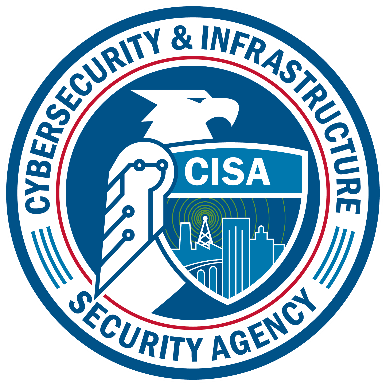Form 9019 Site Security Plan and Alternative Security Program Subm
Chemical Security Assessment Tool (CSAT)
1670-0007 Instrument_SSP ASP (16-DEC-2022)
CSAT Site Security Plan (SSP) & Alternative Security Plan (ASP) submitted in lieu of the SSP
OMB: 1670-0007
Site
Security Plan and Alternative Security Program Submitted in lieu of
a Site Security Plan
For
inclusion within ICR 1670-0007
Cybersecurity
and Infrastructure Security Agency





Paperwork Reduction Act Statement
In accordance with the Paperwork Reduction Act, no one is required to respond to a collection of information unless it displays a valid Office of Management and Budget (OMB) Control Number. The valid OMB Control Number for this information collection is 1670-0007. The time required to complete this information collection is estimated to average 7.845 hours per response, including the time for reviewing instructions, searching existing data sources, gathering, and maintaining the data needed, and completing and reviewing the collection of information.
Privacy Notice
Authority: 6 U.S.C. §§ 621-29 (Protecting and Securing Chemical Facilities from Terrorist Attacks Act of 2014) and the Chemical Facility Anti-Terrorism Standards, 6 C.F.R. Part 27 authorize the collection of this information.
Purpose: The primary purpose of this collection is to meet the requirements referenced in 6 C.F.R. §§ 27.225, 27.230, 27.235, and 27.245.
Routine Use: The Personally Identifiable Information (PII) you provide will be used by and disclosed to DHS personnel, contractors, or other agents, including but not limited to other Federal, state, and local officials provided the recipient demonstrates a need to know in order to carry out official duties; and used in contacting facility security officials listed and/or off-site emergency responders and to verify compliance with SSP requirements.
Disclosure: Providing PII is voluntary. Covered chemical facilities are not required to provide this PII to comply with 6 CFR Part 27.
Survey Selection
In this section, all facilities will choose to proceed with the Chemical Security Assessment Tool (CSAT) Site Security Plan (SSP) or the Alternative Security Program (ASP). Tier 3 and Tier 4 facilities will have, within 90 days of tiering, the option to notify DHS that it intends to submit an Expedited Approval Program (EAP). Facilities that provide this notification would then be allowed to submit an EAP after 30 days of the notification but not later than 120 days of tiering. Facilities that choose to submit an ASP or EAP will complete a manual document and upload. The remainder of this instrument only applies to facilities that choose to complete the CSAT SSP.
Detection
In this section, the instrument will use yes/no questions, checkboxes, drop down, multiple choice, and text fields to collect the following facility and critical asset detection information:
Work shifts and the number of employees on each shift
Intrusion detection system (IDS), any backup power supplies used, sensor type(s), location(s) of the IDS, administration of the IDS system, monitoring frequency, and where it can be controlled
Type(s) of personnel-based monitoring, roving and/or stationed monitoring, locations and frequency of patrols, and observation the posted personnel provides
Lighting and illumination levels around the facility and any backup supplies the facility has in place
Process control functions in place at the facility
Closed Circuit Television (CCTV) system(s) and their functionality, administration, monitoring frequency, location, and any backup power supplies employed
Number of onsite security force, their equipment, and response times
Frequency of formal and informal inventory of the Chemical of Interest (COI)
Planned or proposed detection measures the facility wants to share with the Department including any existing or planned measures the facility proposes to remove to include a general timeline for such action
Delay
In this section, the instrument will use yes/no questions, checkboxes, drop down, multiple choice, and text fields to collect the following facility and critical asset Delay information:
Location and type of signage, perimeter, gates, doors, barriers, and locking mechanisms
Clear zone descriptions and standoff distance
Description of restricted areas/critical assets and policy for accessing critical assets
Personnel screening performed, identification checks, access control measures used to verify individual identities, escort policies, and restricted area screening types
Inspection methods of hand carried items, vehicles, trucks, and rail cars
Access control systems, all backup power supplies, access methods, accountability programs, and compromise procedures
Key inventory/control programs
Vehicle access restrictions and identification measures
"Know Your Customer" or other customer vetting procedures and Product Stewardship programs
Documentation, review, and validation of COI sales, purchases, storage, and distribution
Carrier and shipment security measures employed
Man-portable security measures, tamper-evident mechanisms, inventory control methods for tracking, protecting, and the storing of COI and hazardous materials
Transportation security measures and rail/tanker security storage measures
Planned or proposed delay measures the facility wants to share with the Department including any existing or planned measures the facility proposes to remove to include a general timeline for such action
Response
In this section, the instrument will use yes/no questions, checkboxes, drop down, multiple choice, and text fields to collect the following facility Response information:
Emergency and security response capabilities to site emergencies and security events
Local fire department jurisdiction, police department jurisdiction, HAZMAT team jurisdiction, emergency medical technician (EMT) jurisdiction, and response time
On-site fire, police, HAZMAT, and EMT capability
Special response capabilities, ability to shelter-in-place, and any community notification system capability
Crisis management plan for responding to an incident and all associated plan responsibilities
Emergency Operations Command Center and Security Command and Control Center
Communication capabilities for the facility, security, and community
Facility response equipment maintained and associated backup power
Frequency of site response drills and exercises, as well as the frequency of other drills and exercises
Process safeguards and/or automated control systems able of rapidly putting the COI in a safe and stable condition
Participation in outreach programs and the frequency of participation
Participation in joint initiatives with other organizations/agencies, and the frequency of participation
Elevated threat level security measures, imminent threat level security measures, time to implement increased levels of security in response to elevating National Terrorism Advisory System (NTAS) threat levels, and any additional elevated threat response elements
Policies, procedures, and training for addressing specific threats as identified by the Assistant Secretary
Planned or proposed response measures the facility wants to share with the Department including any existing or planned measures the facility proposes to remove to include a general timeline for such action
Cyber Security
In this section, the instrument will use yes/no questions, checkboxes, drop down, multiple choice, and text fields to collect the following facility Cyber Security information about systems critical to the security of chemicals of interest:
Cyber control and business system(s) related to and associated with the facility
Internet Protocol Address(es) and Domain Names System Information related to and associated with cyber systems and the facility
Physical location of the cyber control and business system(s)
Development, maintenance, and audits of cyber security policies and procedures
Personnel security requirements and procedures/practices for facility employees, service providers and other third parties responsible for cyber systems
IT and cyber security officials and responsibilities
Cyber access controls and password management
System boundaries, remote and wireless access, and cyber security controls
Frequency of network monitoring, event log reviews, and detection of anomalous events
Cyber security training to include topics and frequency of training
Cyber security controls, updates, patches, etc.
Cyber incident response, reporting, recovery/reconstitution phases, etc.
IT business needs, network/system architecture, and system lifecycle management
Backup power maintained for cyber/business systems
Other cyber security measures to include physical access controls
Planned or proposed cyber security measures the facility wants to share with the Department including any existing or planned measures the facility proposes to remove to include a general timeline for such action
Security Management
In this section, the instrument will use yes/no questions, checkboxes, and text fields to collect the following facility Security Management information:
Procedures and policies for the inspection, testing, and periodic maintenance of security equipment and systems to include the types of inspections, testing, and maintenance as well as the frequency of the activities
Temporary/compensatory measures for security system deficiencies and failures
Security awareness and training program and drills/exercises for facility personnel, security personnel and Site Security Officer (SSO)/Assistant SSO training with a routine frequency and any programs to reduce workplace violence and potential sabotage
Personnel surety procedures and background investigations for facility personnel and unescorted visitors with access to restricted areas and critical assets, specifically related to identity, legal authorization to work, and criminal history checks and terrorist tie screening
Background check audit procedures
Incident reporting procedures and policies as well as training regarding incident reporting and the frequency in which it takes place
Security incident investigations including information collected, investigator qualifications, and documentation of past incidents for lessons learned
Description of the security organization
Qualifications and responsibilities of the SSO
Affirmation of the retention and required elements of records associated with training; drills and exercises; incidents and breaches of security; maintenance and testing of security equipment; security threats; audit; Letters of Authorization and Approval; Top-Screen; SVA; SSP and all correspondence with the Department
Record creation, administration, and disposal
Planned or proposed security management measures the facility wants to share with the Department including any existing or planned measures the facility proposes to remove to include a general timeline for such action
DHS Form 9019
| File Type | application/vnd.openxmlformats-officedocument.wordprocessingml.document |
| Author | [email protected] |
| File Modified | 0000-00-00 |
| File Created | 2023-08-27 |
© 2025 OMB.report | Privacy Policy